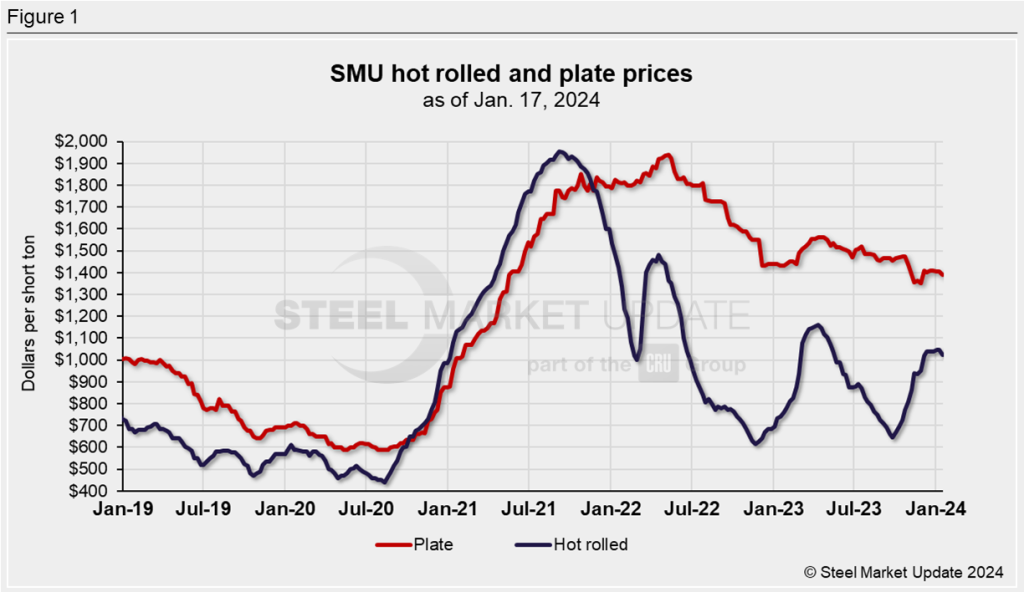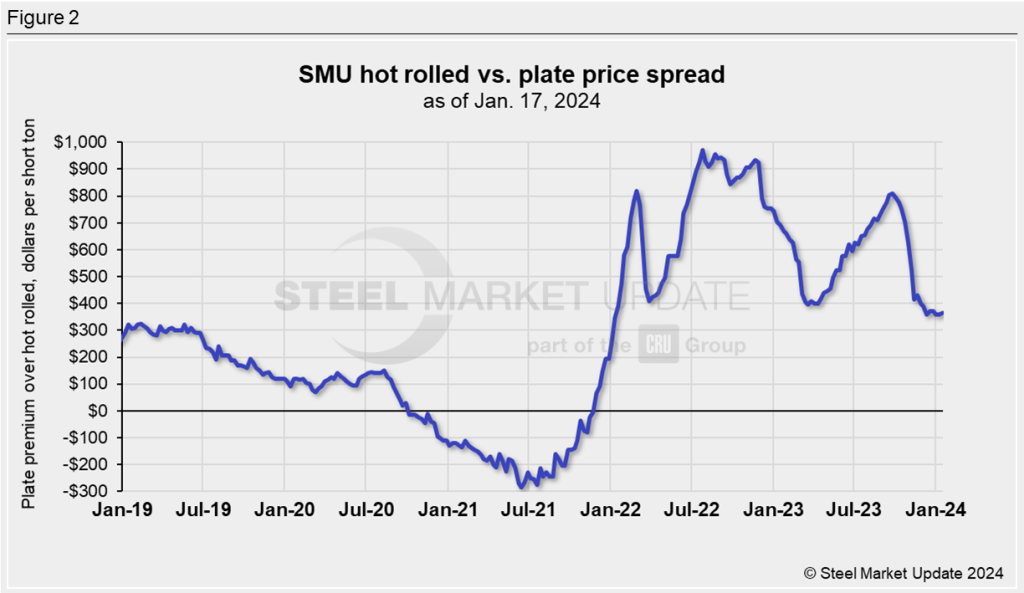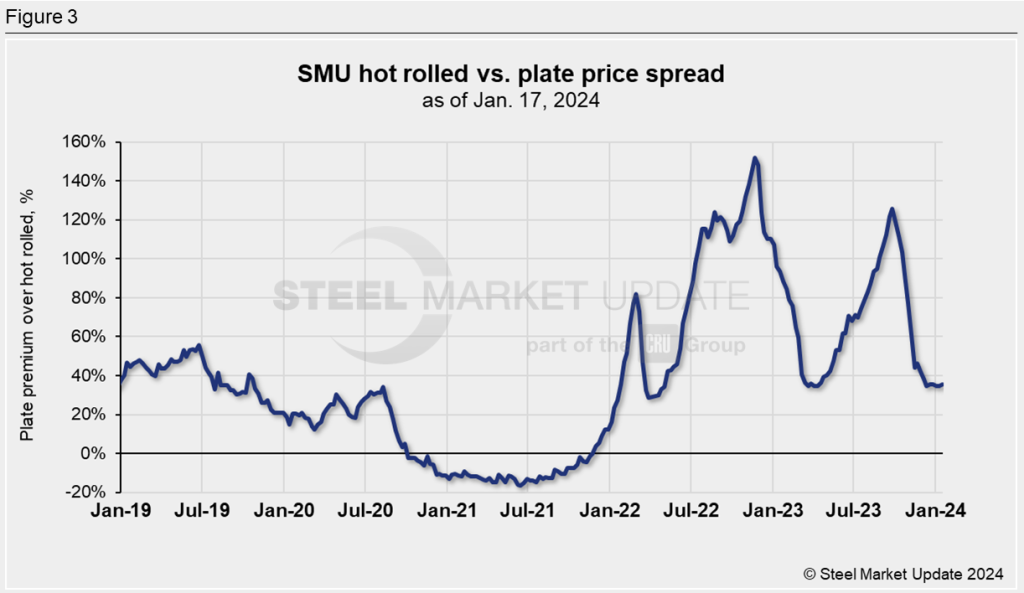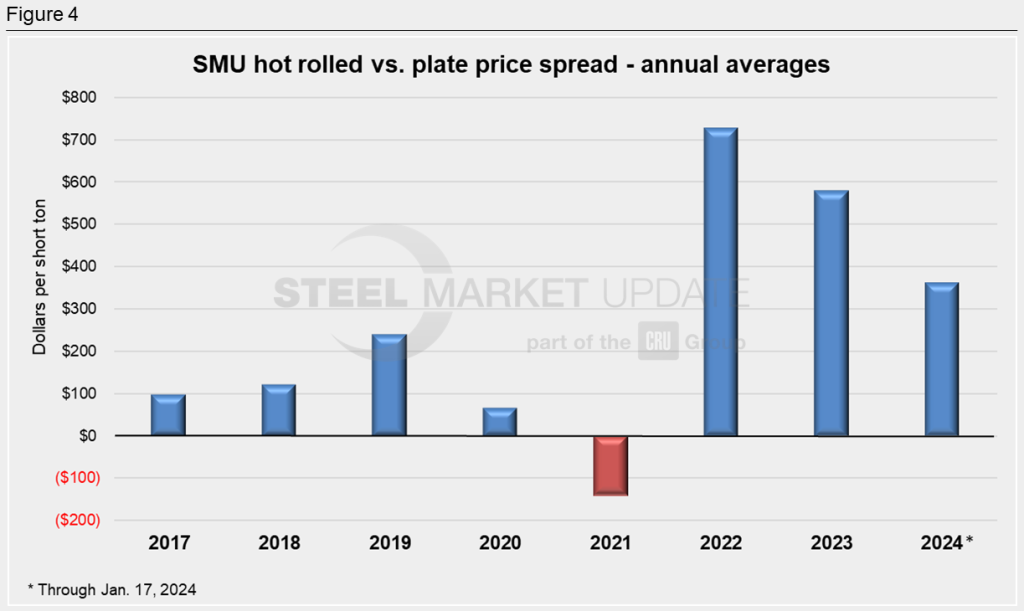Market Data
January 19, 2024
HRC vs. plate price spread narrowing but still high
Written by Laura Miller
The premium plate prices have held over hot-rolled coil (HRC) has been narrowing but remains elevated compared to historical levels. The current spread between the two products is now close to its narrowest point since it began ballooning early in 2022.
Pricing levels
Prices for both HRC and plate have come down from the highs experienced in 2021 and 2022 but remain high compared to pre-2021 levels.
HRC prices hit a recent low of $945 per short ton on average during the week of Sept. 26, 2023, before rising through the rest of the year. Prices began 2024 at $1,045/st but have started showing signs of weakening, with SMU’s Jan. 16 market check showing an average price of $1,025/st.
Plate prices, meanwhile, hit an all-time high of $1,940/st during the week of May 10, 2022. They’ve since fallen but remain significantly inflated compared to historical pricing levels. Since December, plate prices have been hovering around $1,400/st. Our Jan. 16 market check pegged plate prices at $1,390/st.

Plate’s premium over hot rolled
Steel plate has traditionally held a premium over hot rolled, but that changed in October 2020 when hot rolled began selling at a higher price than plate. The spread between HRC and plate remained negative through the middle of November 2021. HRC prices then began to fall while plate prices remained elevated, leaving plate with a significant premium over hot rolled – much higher than historical levels.
The spread in pricing hit a 2023 peak of $795/st at the beginning of October before plummeting to $360/st just two months later. It has since held steady at that level, most recently at $365/st during the third week of January.
The spread has not been below $360/st since January 2022.

Plate’s premium over HRC as a percentage of the HR price hit an all-time high of 152% on Nov. 11, 2022, before retreating to 34% in early April 2023. It then quickly increased before reaching its highest point of 2023 at 126% late in September. The premium then fell even faster than it had risen, falling to the 34% level once again at the start of 2024. It’s remained around that level thus far in January, coming in most recently at 36% in the third week of the month.

Annual comparison
To compare the current pricing spread between HRC and plate, let’s look at the annual averages in recent years.
Note that SMU began tracking plate prices in March 2017, so that’s where our data starts.
Plate’s premium over hot rolled was under $250/st from 2017 through 2021, before ballooning to an average of $726/st in 2022. The premium declined to $579/st on average in 2023. The spread has averaged $362/st so far in 2024.

You can graph the relationship between HRC and plate prices, as well as the other steel prices SMU tracks, using the interactive pricing tool on our website.







